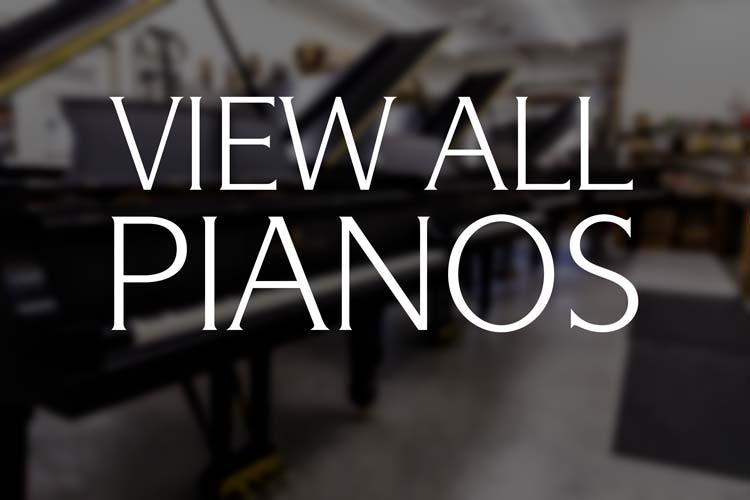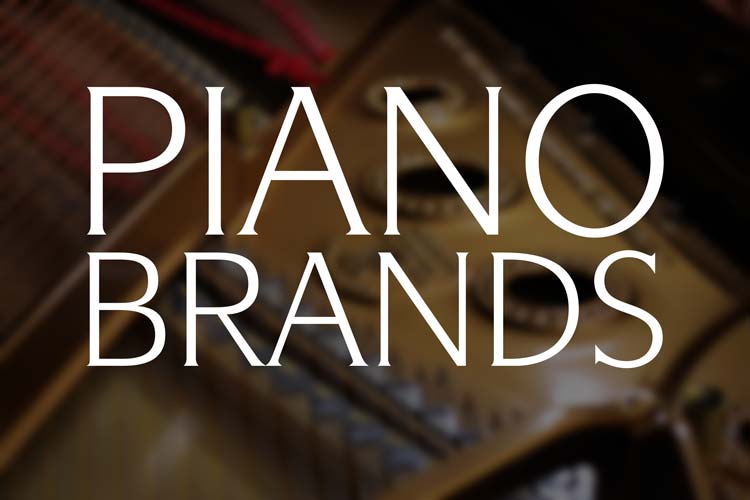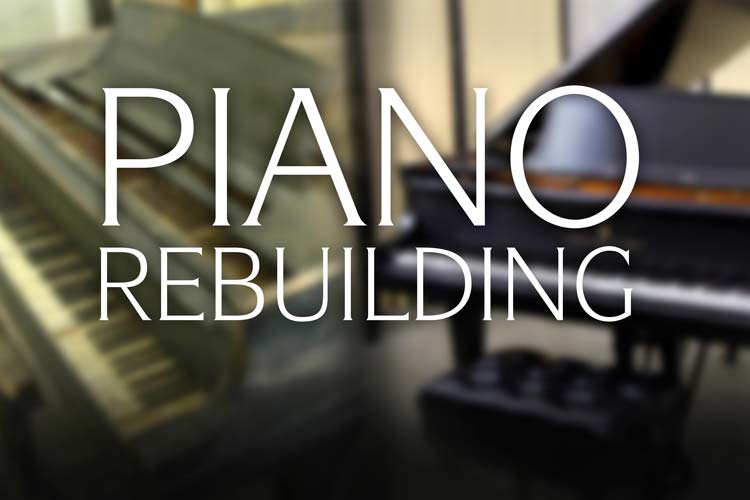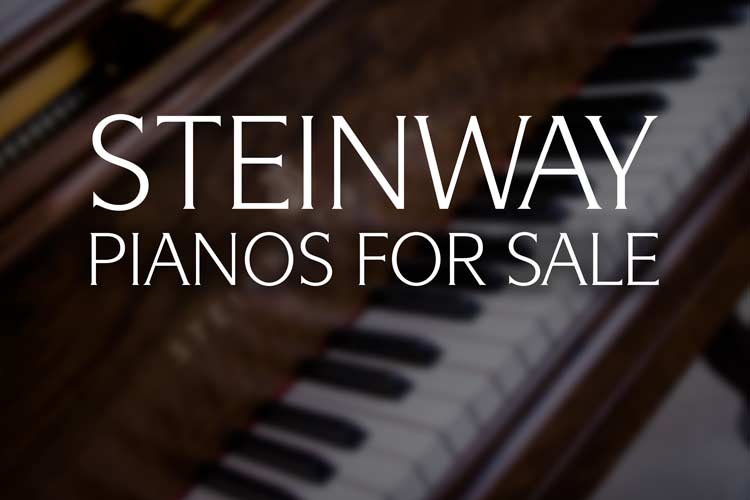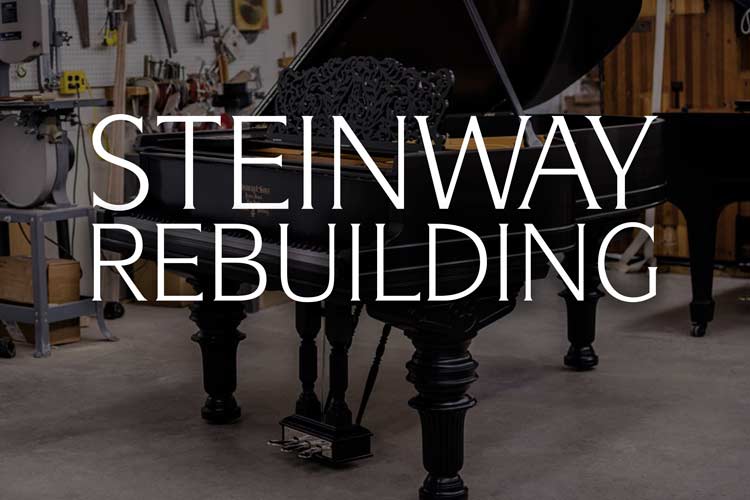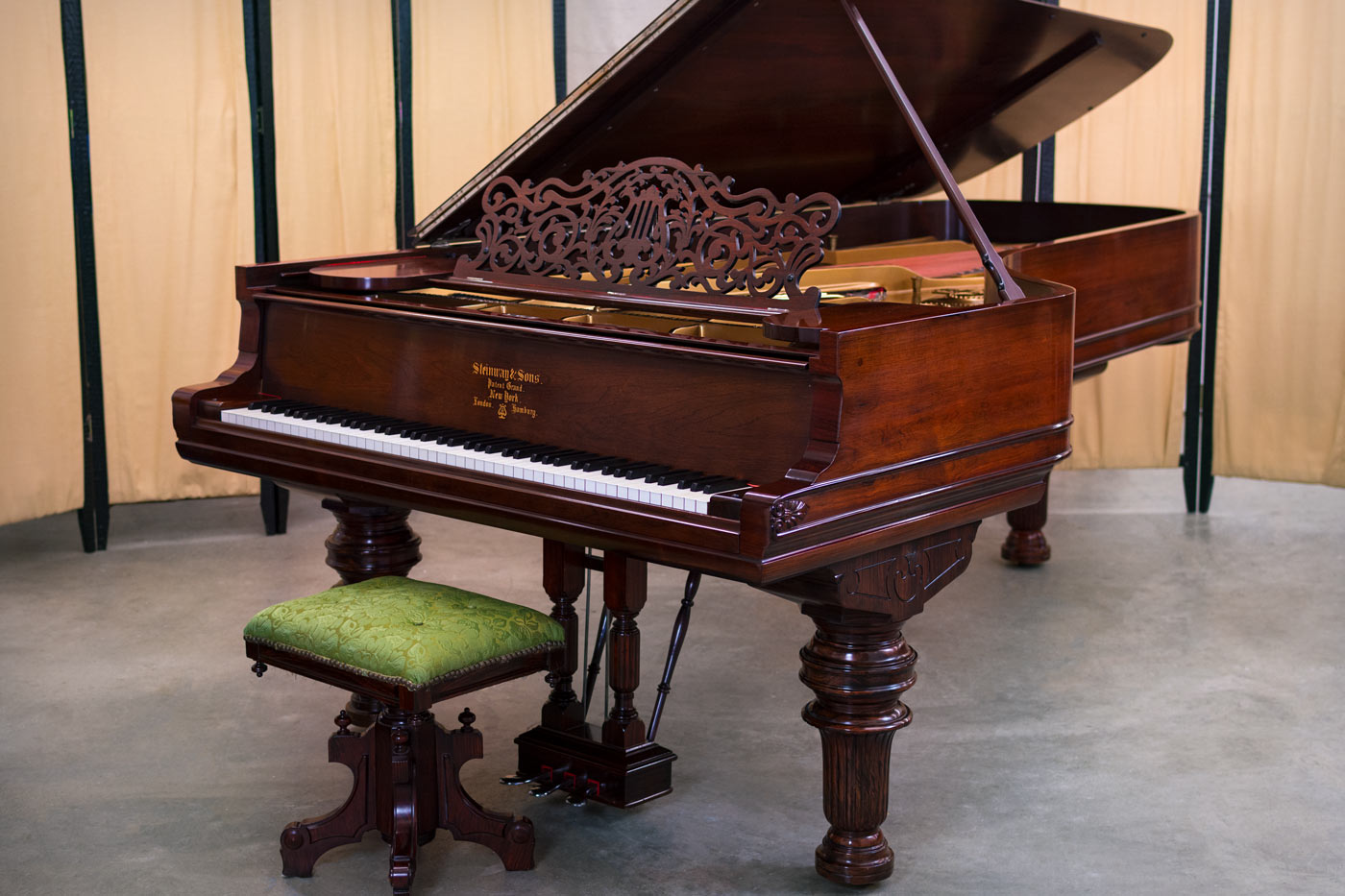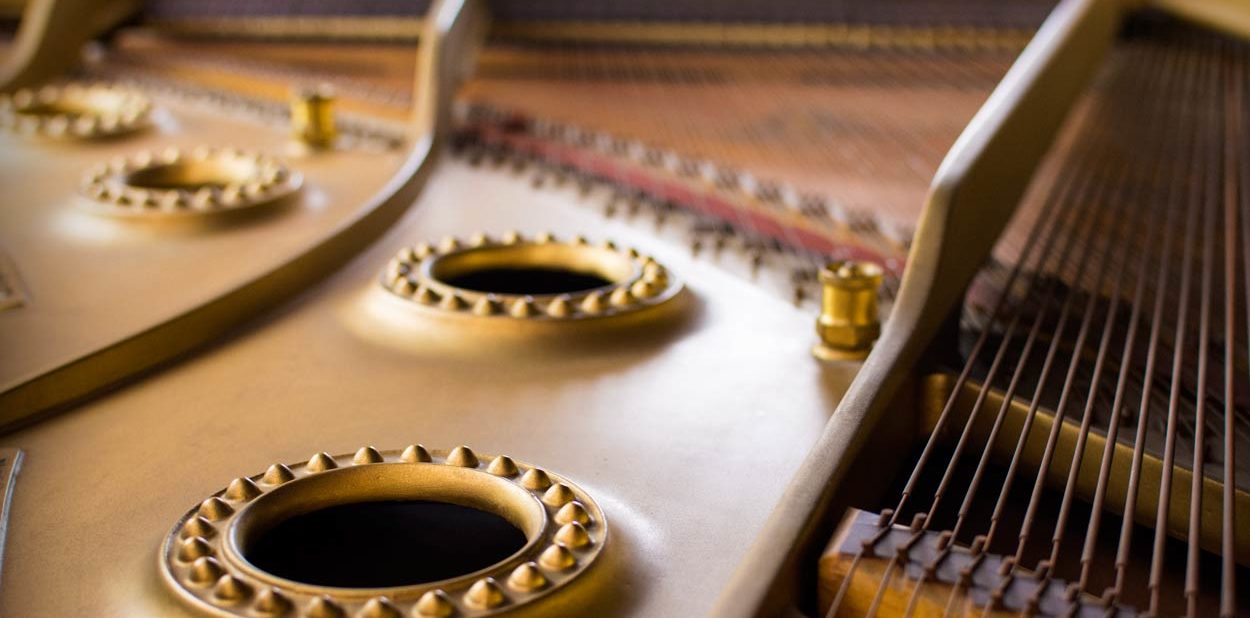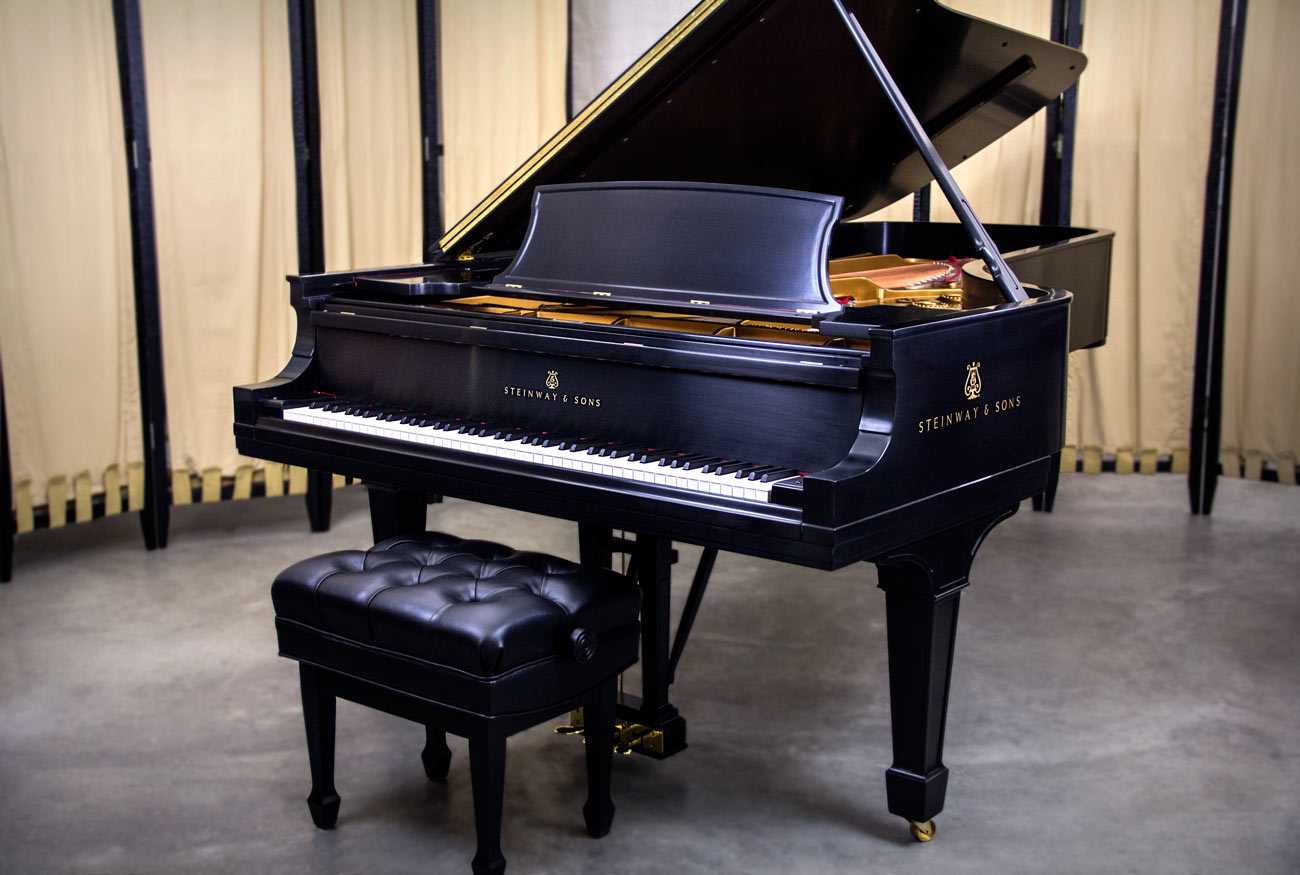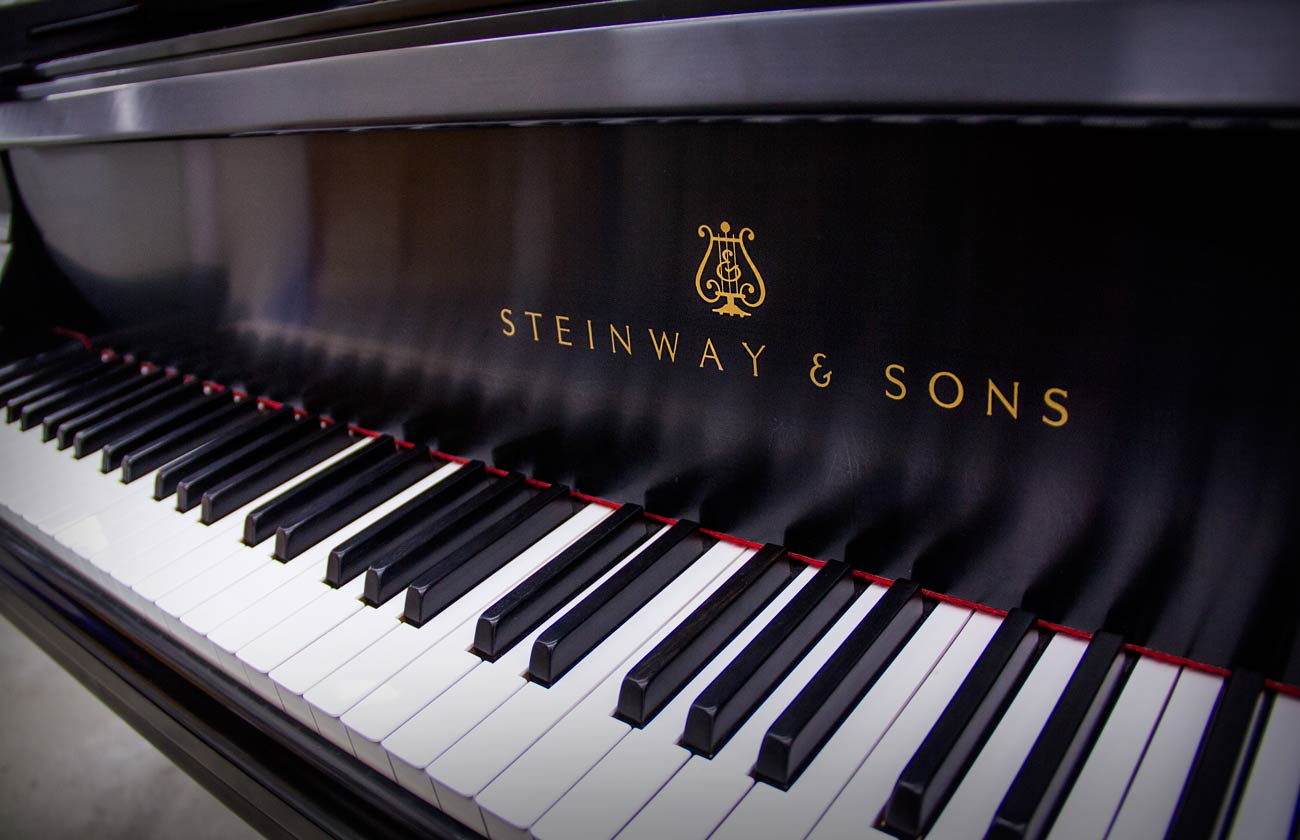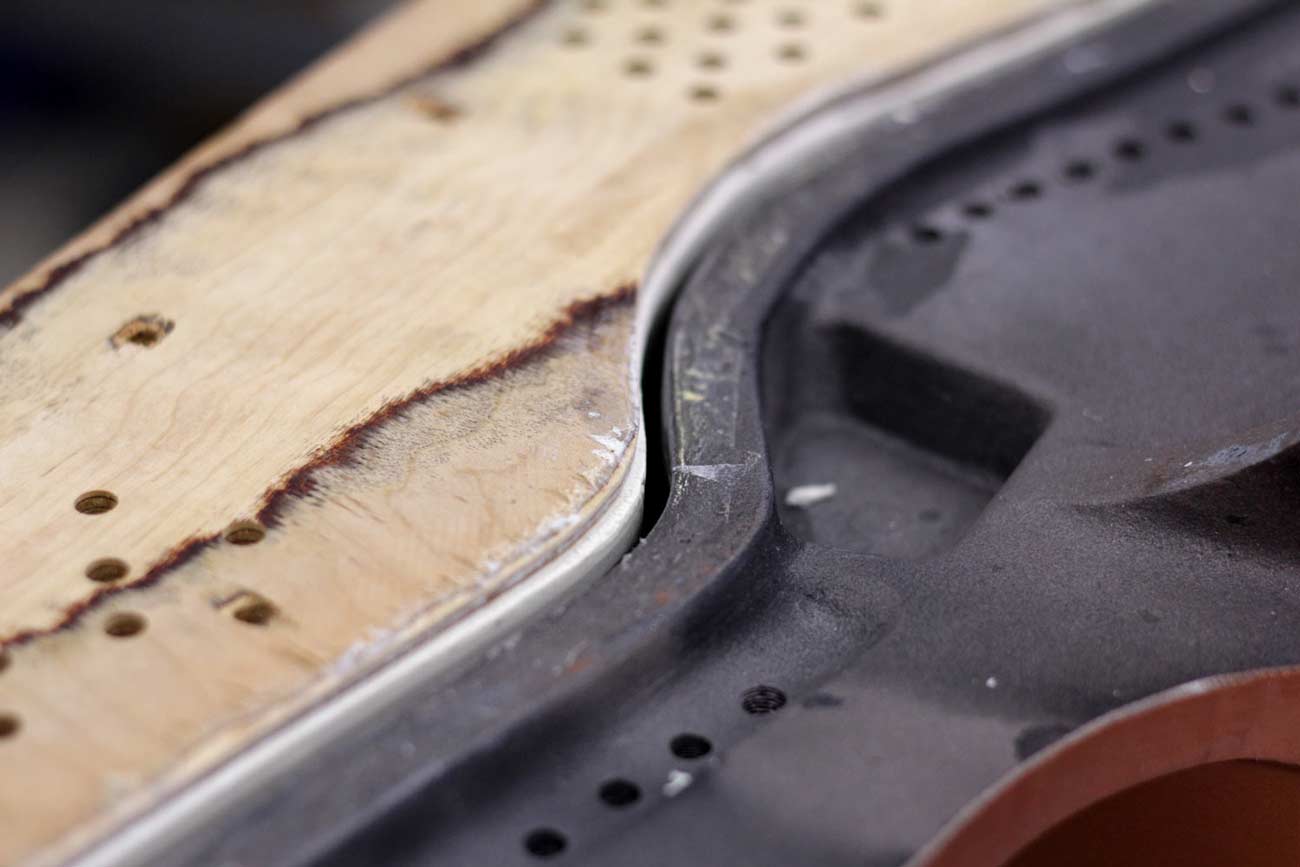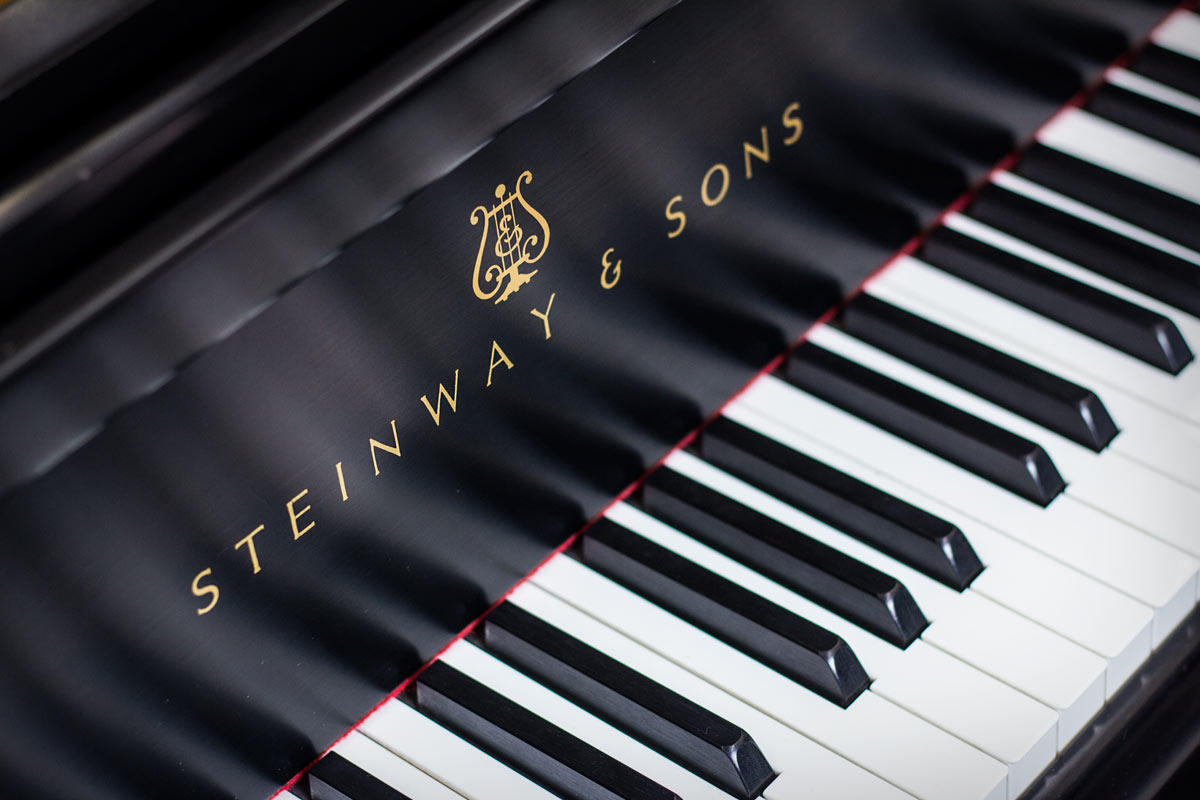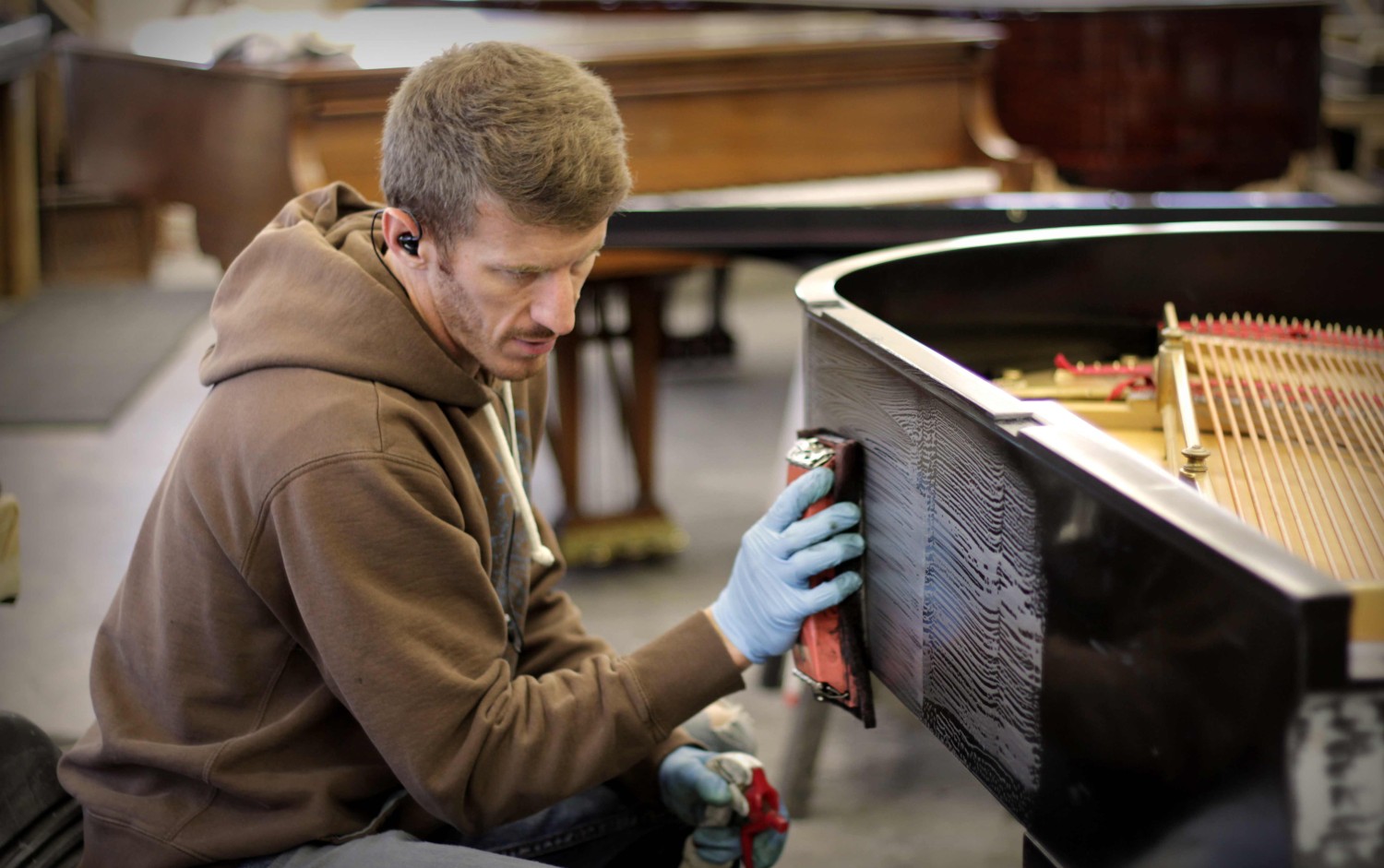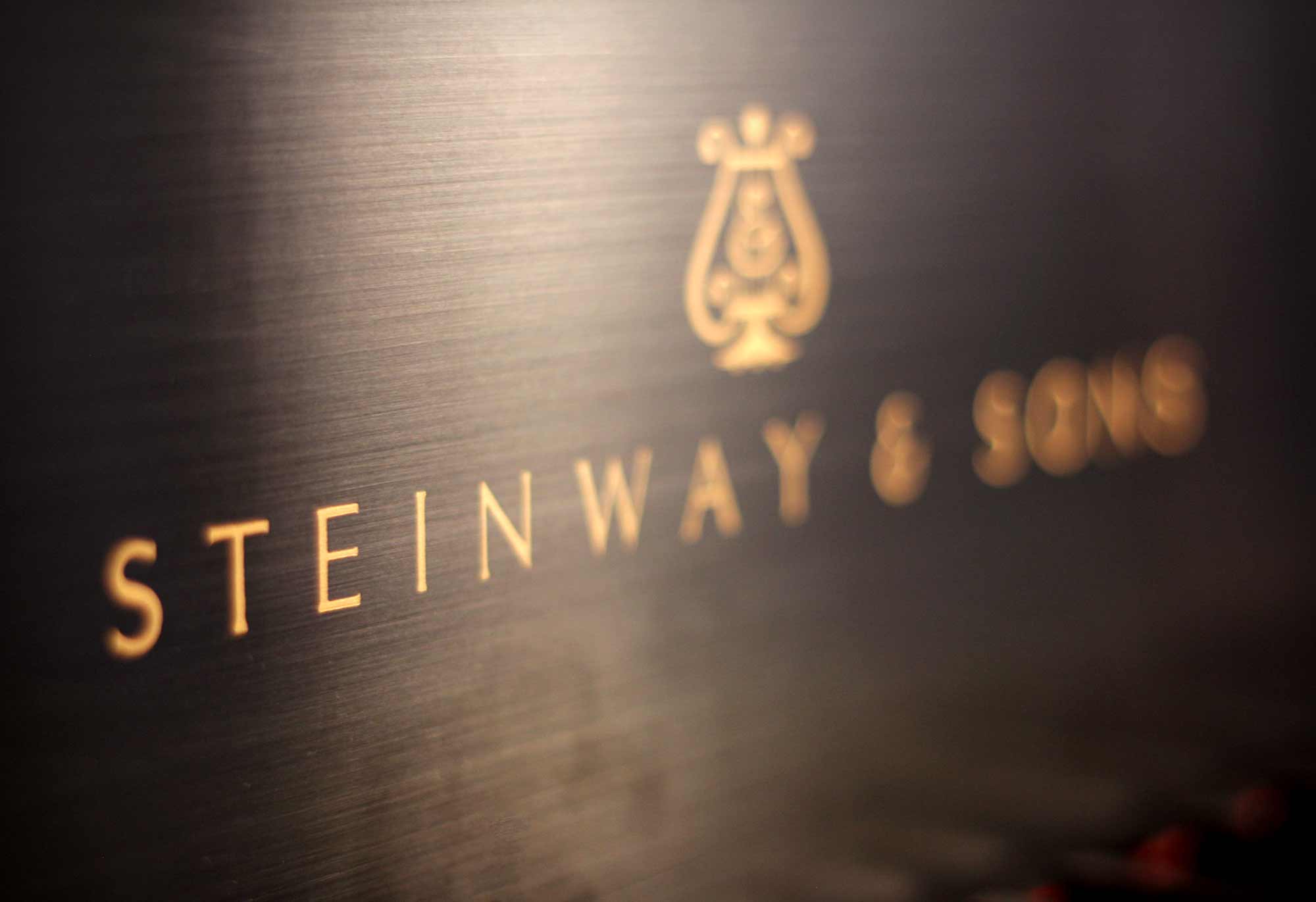History of Art Case Steinway Model D Grand Piano #52626
Steinway Model D Grand Piano #52626 | A Beautiful Past For A Beautiful Piano
There’s an old saying, “If these walls could talk, they’d tell you a story or two.” A concert grand piano from Steinway & Sons will last for generations and over time they accumulate a rich and beautiful history. As one of the greatest piano manufacturers in the world, Steinway pianos are used in venues and by musicians across the globe. Over time, these pianos will see their fair share of usage, and pass through many hands. At Chupp’s Piano Service, we specialize in restoring these beautiful pianos back to playing perfection, and today, we want to shine a little spotlight on a beautiful piano that we are proud to feature - Steinway Model D Grand Piano #52626.The Origin of the Modern Concert Grand
In 1884, a major step forward occurred in the development of the mature concert grand piano- the Model D. The then new Model D was designed and created by incredibly talented craftsman C.F. Theodore Steinway. This new design was the first Steinway Grand to feature a double cupola plate. It featured a 20 note bass section, was overstrung, had a continuous soundboard bridge, and a bent rim case construction. These pianos featured agraffes from notes 1-35 and a capo d’astro bar from notes 36-88. Measuring 8’10” in length with 7 ¼ octaves, these pianos are an essential piece of the piano development puzzle.“Style D has an entirely new interior construction with double cupola steel frame and continuous ring bridge. The improvement in power and sonority of tone is simply marvelous.” – William Steinway, September 1, 1884.
Cracked Pinblock | Grand Piano Pinblock Restoration
Vintage Mason & Hamlin Grand Piano Rebuilding Project | Delaminated Pinblock
As you can see in the photo, it is time for a new pinblock. The original pinblock inside of this Mason & Hamlin Model AA Grand Piano has definitely seen better days. The wood lamimations have begun to separate and crack which results in very loose tuning pins and a lack of stability. The tuning pin holes have become enlarged from decades of stress. At this point, a new pinblock is very much needed. When this part of the piano restoration process is required, we custom fit the new pinblock to the specific piano. This is essential for both the structual and tuning stability of the instrument. The good news is that the piano overall is in very good condition and we look forward to completing this fine, golden era instrument. [Vintage Mason AA Grands measure 6'2" in length and are considered some of the finest pianos under 7' that were ever built.]
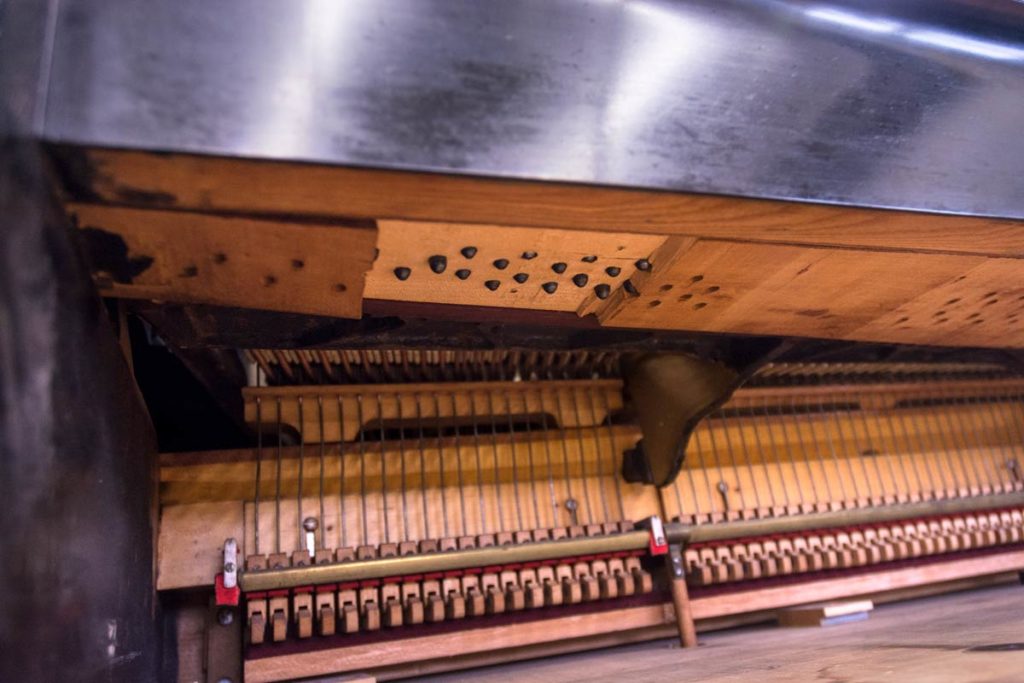 Mason & Hamlin AA | Cracked Pinblock
Mason & Hamlin AA | Cracked Pinblock
VIDEO: The Story of a Steinway Grand Piano Restoration
A Look At The Steinway Piano Rebuilding Process
A little over a year ago we released the short documentary "The Garage Piano: The Story of a Steinway." Since then it has been viewed well over 10,000 times on Facebook and YouTube. This production details just some of the extensive work that goes into each one of our fully rebuilt Steinway pianos. If you haven't seen it yet, be sure to take the time to learn a bit more about the piano rebuilding process.This is the story of the restoration of a Steinway & Sons Grand Piano. This instrument was left alone and neglected in a garage for over 20 years. This short documentary follows the rebuilding process and tells the story of the piano's full restoration and rebirth. From cosmetic details like replacing the keytops to extensively restoring the piano action and refinishing the satin ebony cabinet, this piano documentary shows the work that goes into returning a vintage New York Steinway to its former glory. The art of piano rebuilding is truly art you can feel!
The History of Mason & Hamlin Pianos | An Ongoing Legacy
From 1854 to Today | Mason & Hamlin
The tale of the Mason & Hamlin’s rise to the top of the piano world is an interesting piece of history, dating back to the mid 19th century. Now normally, the first name to come to mind when thinking of premium pianos is probably the venerable Steinway & Sons company. Steinway has long enjoyed a spot at the top of American piano manufacturers in both artists' use and public opinion. However it would be very remiss to ignore the contributions and the ongoing history of another leading piano maker, Mason & Hamlin. Created one year after the founding of Steinway & Sons in 1854, Mason & Hamlin quickly asserted themselves as a company dedicated to handcrafted quality and today is one of only two fully operational piano manufacturers in the United States today (with the other being their longtime competitor, Steinway).A Rare Opportunity | 4 Restored Steinway Model D Grand Pianos
UPDATE: Several of these grand pianos have now been sold. #275187 and #233201 are still available.
The Steinway & Sons Model D is perhaps the most iconic concert instrument in world history. These 9’ grand pianos truly are the apex of Steinway engineering and craftsmanship. The Model D offers artists a level of expression unlike any other and has come to set the standard by which other concert pianos are judged. It is very rare to find one, let alone several fully rebuilt Model Ds available to compare in any location. Here at Chupp’s Piano Service we are proud to have four fully rebuilt Steinway & Sons Model D Concert Grand Pianos in performance ready status in our facility, with more in the process of being rebuilt. Each of these wonderful instruments feature their own distinct musical quality.A Unique Steinway Model D Grand Piano
Model D #269017 | A Unique Steinway Piano
In the early 1980s, I had a long conversation with Fred Drasche the former head service technician at Steinway. As we discussed the history of Steinway and their instruments, he told me that around 1950, Steinway produced two Model D grand pianos with Western Red Cedar soundboards. The red cedar was used in place of the regular spruce soundboards. His words were "those were two of the best sounding Steinway Ds I ever heard." For many years, we here at Chupp's Pianos wanted to install a western red cedar soundboard. This goal was something which we were finally able to accomplish recently! Out of five pianos in which we installed western red cedar soundboards, Steinway Model D #269017 is the most powerful of them all. Some of the finest acoustic guitars incorporate western red cedar tops to obtain optimal tonal quality so utilizing this material in musical instruments is not uncommon. Attached is a link to more information about the piano and photos are embedded below.Young Chang Pinblock Problems – How We Fix It
Chupp’s Restores Steinway Piano for Cheyenne Civic Center
Cheyenne Civic Center's Piano Ready for Upcoming Shows:
Recently Chupp's Pianos restored a Steinway & Sons Model D Concert Grand Piano for the Cheyenne Civic Center. The piano was carefully rebuilt and regulated by our expert piano technicians to bring back the iconic Steinway tone we all know and love. Tim Chupp recently traveled out to Cheyenne, Wyoming to make some finishing touches to the instrument in its new home. Attached below is a photo of the instrument sitting on the concert venue's beautiful stage.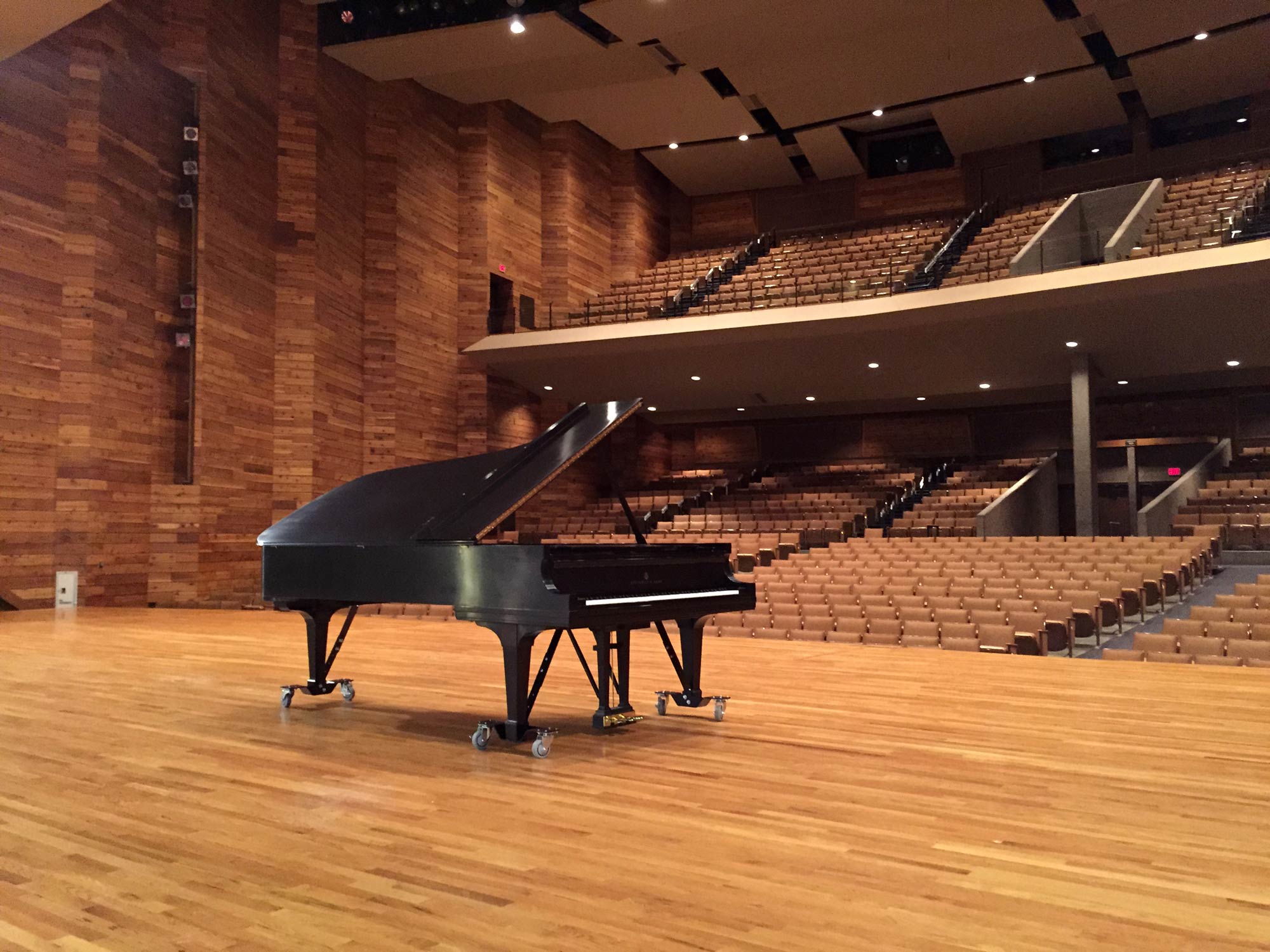
Piano Care: Cleaning your Piano Keys
Cleaning your Piano Keys:
There are 88 piano keys on a standard grand piano. Each one of those keys are covered by a piece of plastic or ivory called a keytop. Although some notes may get more of a workout then others, they all can use a good cleaning now and than. But what is the best way to remove the dirt, grime and oil that can accumulate? The first thing you will need to do is determine what material your piano keys are made out of. Due to the ban on the use of newly harvested ivory, the vast majority of pianos played and manufactured today have some type of plastic or high quality simulated ivory keytop. Although the feel of ivory is not always fully duplicated, they are usually more durable and easier to clean. If your keytops are plastic, use a clean white cloth with a bit of mild soap or key cleaner to remove the grime. After applying the cleaning solution to the cloth itself, wipe the keys down with a back to front motion, not side to side. Clean a few keys at a time and then dry with another cloth. Be careful not to use a colored cloth as the color could bleed onto the keys. Be sure to also take care to not get the cleaning solution on the wooden piano keys themselves. The wood can absorb the moisture, causing swelling or separation.Is My Piano Worth Restoring?
Does Your Piano Need Work? | Three Things to Check
"Should I get my piano worked on? It sounds OK as it is I guess. Is my piano worth the work?"
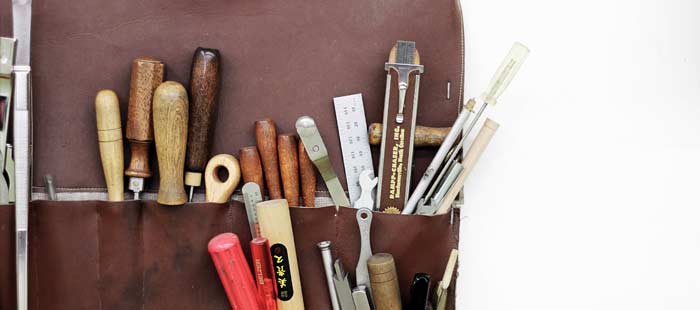 These are questions technicians often hear from piano owners. Why spend the money and time to get your instrument worked on if nothing is terribly 'broken?' In some cases that is true. When attempting to decide whether it is worth the investment, we ask:
These are questions technicians often hear from piano owners. Why spend the money and time to get your instrument worked on if nothing is terribly 'broken?' In some cases that is true. When attempting to decide whether it is worth the investment, we ask:
- What is the brand name? (A lower quality brand usually isn't worth the work.)
- What is the type? (An upright restoration isn't as likely to be cost effective as a grand.)
- How old is it? (A 110 year old piano is probably going to need more work than one 10 years off the line. The brand and size of the piano dictate whether it is cost effective or not.)
1: The Tuning
This is one of the basics, although it is surprising how often it is ignored. A piano that is out of tune is obviously not at its full potential. You may get used to an out-of-tune sound, however you will not be getting the best your instrument can offer. A regular tuning is essential to keep your instrument in good working order and sounding like it should. The pins in the pinblock can also become loose, preventing the piano from being in tune. Here at Chupp's we recommend tuning your home piano twice every year, although this could change, depending on the environment. A concert piano should have a 'touch up' by a trained concert tuner before every performance. A regular tuning can indicate how much care the piano has received - as a qualified technician can examine the instrument when he visits it to tune.

